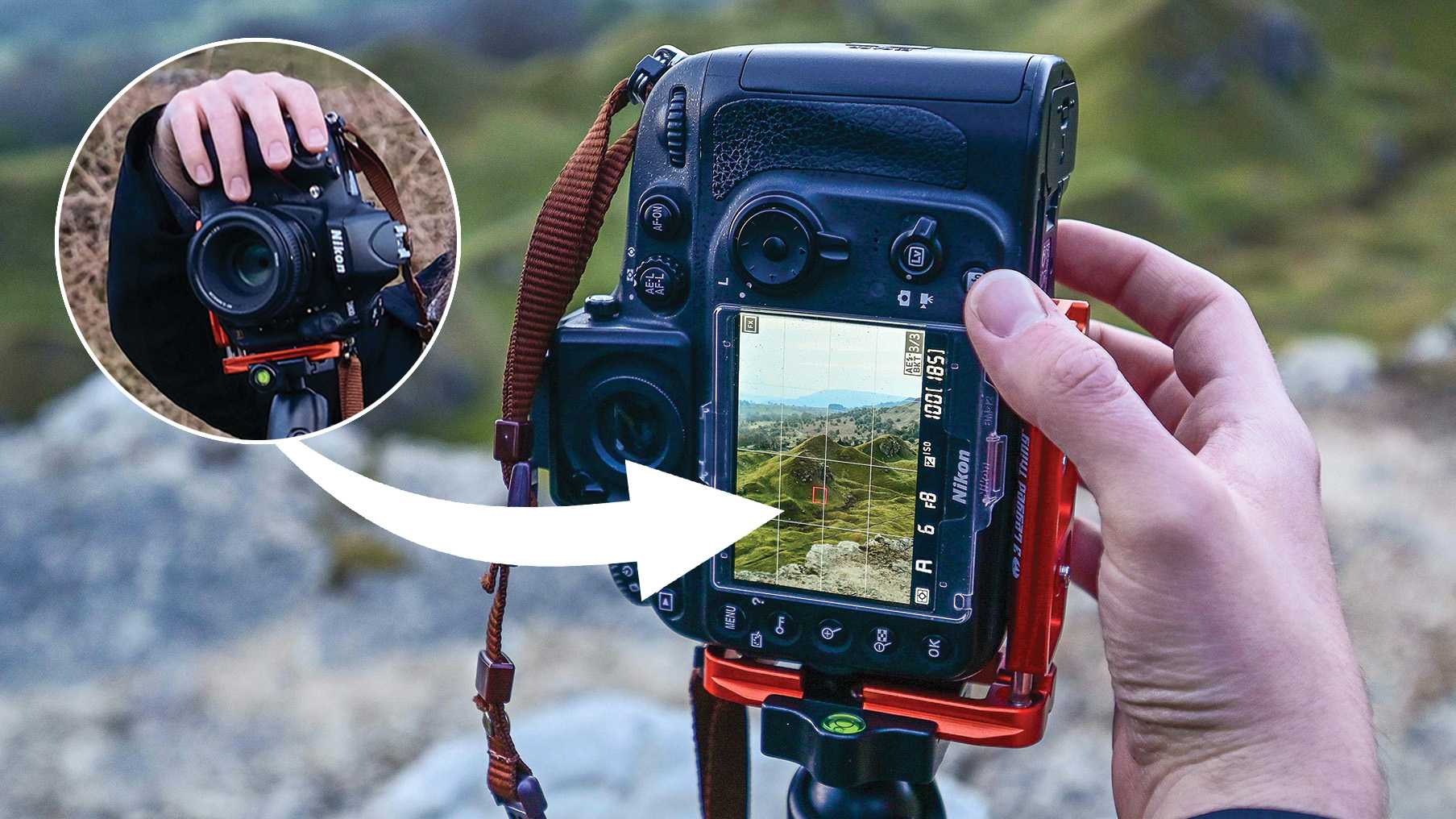
In a world where cameras have generally been getting smaller, I’ve always gravitated towards larger full-frame bodies, my Nikon D800 and Nikon Z8 being the case in point. But bigger bodies and bigger lenses for larger sensors all equate to a heavier payload, which can exacerbate a photographic phenomenon I like to call ‘ball-head creep’.
You know, being forced to essentially hang the camera and lens off to one side to vertically orient it, only to frame the perfect composition and watch as gravity encourages it to droop. At best, it’s annoying, at worst – if you’re shooting a long exposure – it can be image-breaking.
For years I never considered using one of the best L-brackets. But one day, I witnessed Digital Camera World’s very own News Editor, Adam Waring, merrily capturing portrait-orientation landscapes with his L-bracket. Cue Billy Ocean’s Suddenly playing in my head, my vision ethereally blurred, as I handled an angel-wing-and-halo-clad L-bracket – in cinematic slow motion – for the very first time.
It was love at first shot.
An L-bracket screws onto a camera’s tripod thread. Its L shape allows the bracket to press flush against both the underside of the camera and one side. Each axis has a tripod-head-compatible attachment on both axes, be it Arca Swiss or a proprietary design. This means you can mount your camera directly onto the tripod head horizontally or vertically. Crucially, this allows you to maintain a good center of gravity when shooting portrait-orientation images.

Personally, I haven’t found a better quick-release mechanism than the famed Arca Swiss attachment on my 3 Legged Thing Ellie Universal L-Bracket (now succeeded by the 3 Legged Thing Lexie), so having an L-bracket with this attachment provides me with even more fluidity as I can quickly attach and reattach my camera and seamlessly swap between orientations.
Ellie (great name for an L-bracket) goes with me everywhere, although I keep meaning to pick up Zooey, which is 3 Legged Thing’s L-bracket designed specifically for the Nikon Z8. The company makes a range of bespoke L-brackets for Canon cameras, Sony cameras, Fujifilm cameras, and OM System cameras to boot. And of course, there are plenty of other L-brackets out there from the likes of Manfrotto and Kirk Enterprises.
If you’ve never tried an L-bracket before and you own a tripod, picking one up is a no-brainer. I’ve not come across anybody, yet, who doesn’t like them. You may even find yourself using your tripod more – I know I did. As Digital Camera Worlds How To Editor I believe wholeheartedly that kit doesn’t maketh the photographer and that technique and creativity trumps all. But however small and simple an L-bracket is, it simply makes capturing long exposures more comfortable.
This means you can worry less about ‘ball-head creep’ and more about the scene in front of you and the photograph you’re taking.
You may also like...
If you're going to invest in a good-quality L-bracket, it pays to have a good-quality tripod. I recently reviewed the Manfrotto Befree Advanced Carbon Fiber travel tripod, although it's not Arca-Swiss compatible. Alternatively, take a look at the best tripods. Plus, here are some tips for taking better professional long-exposure shots after dark.







